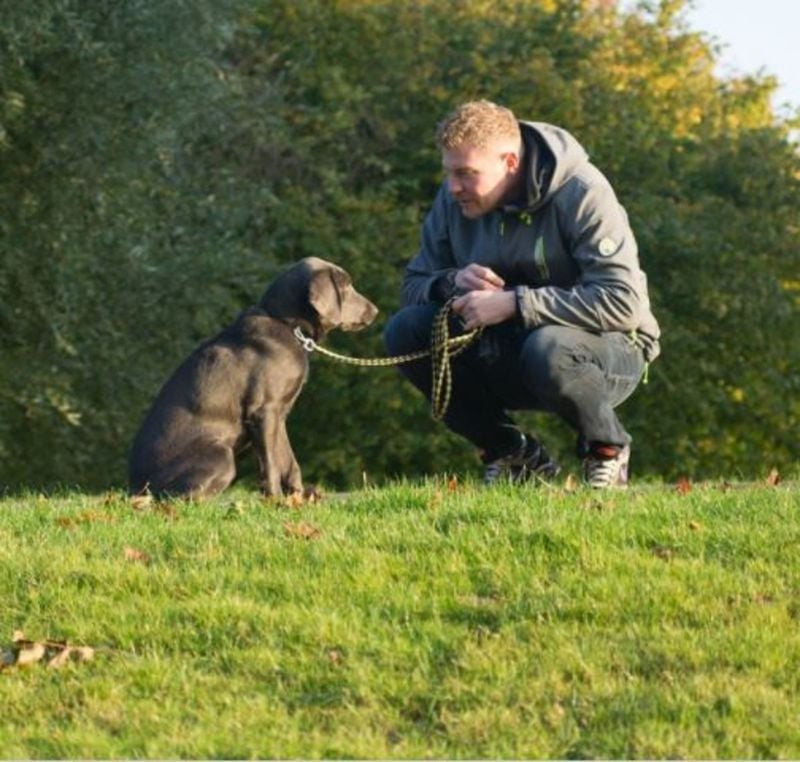Dog Trainers Reveal 7 Genius Tips for Stress-Free Walks
Walking your dog should be enjoyable for both of you, but sometimes it feels more like a wrestling match than quality time together. Many pet parents struggle with pulling, barking, or dogs that freeze in fear during walks. Professional trainers have perfected techniques that transform chaotic outings into peaceful adventures, and they’re simpler than you might think.
The key isn’t fancy tools or hours of obedience drills—it’s building your dog’s confidence and communication skills through small, consistent habits. These skills help your pup feel safe, focused, and more connected to you, which means fewer leash tangles and more wagging tails.
Whether you’ve got a curious puppy, a reactive rescue, or a seasoned senior, the right strategies can make a world of difference. From attention-building games to easy cue training, you can help your dog feel calm, in control, and even excited to follow your lead.
Ready for walks that feel less like a struggle and more like a shared adventure? We’ve rounded up seven simple, trainer-approved skills you can start using today. No gimmicks. Just real, effective techniques to give your dog more freedom—and help you both enjoy the journey.
1. Master the Art of Loose Leash Walking
Constant pulling can turn walks into arm-wrenching workouts nobody enjoys. The secret? Reward your pup for staying beside you rather than lunging ahead. When your dog creates slack in the leash, immediately praise and treat them.
Practice makes perfect in low-distraction areas first. Try stopping whenever pulling starts, then only moving forward when your furry friend returns to your side. This teaches them that pulling achieves nothing.
Many trainers recommend starting with short, successful sessions rather than marathon training walks. Five minutes of proper walking builds more skill than an hour of reinforcing bad habits.
2. Establish Regular Check-ins With Name Response
Dogs who respond reliably to their name make walks infinitely more manageable. Begin by saying your dog’s name in an upbeat tone, then immediately reward them with a high-value treat when they look at you.
Gradually increase the distractions around you as their skills improve. These check-ins create a powerful communication system between you and your pup. When facing potential challenges like approaching dogs or cyclists, a quick name response can redirect their attention back to you.
Practice randomly throughout walks, not just during tense moments. This builds a reflexive response that works when you need it most.
3. Use “Let’s Go” Cues for Smooth Direction Changes
Teaching a clear directional cue like “Let’s Go” gives you a polite way to keep moving when your dog wants to stop and sniff for eternity. The technique is straightforward: say your cue in a cheerful voice, take a step in your desired direction, and reward your dog when they follow.
This cue becomes invaluable when you need to avoid approaching triggers or navigate busy areas. Practice random direction changes during calm walks so the cue becomes second nature.
Many trainers recommend pairing this verbal cue with a gentle leash signal rather than a forceful pull. The goal is communication, not coercion.
4. Perfect the Touch (Nose Targeting) Technique
Nose targeting transforms walks by giving your dog a focus point besides that squirrel across the street. Start by presenting your palm and rewarding your dog when their nose touches it.
Soon they’ll associate your hand with positive experiences. During walks, this simple touch cue can interrupt fixation on triggers or guide your dog past distractions.
The beauty lies in its versatility – use it to navigate tight spaces, redirect attention, or create a moment of focus during chaotic situations. Many professional trainers consider touch targeting their secret weapon for helping anxious dogs navigate stressful environments with confidence.
5. Practice Mat or Settle Training for Public Pauses
Ever wish your dog could calmly wait while you chat with neighbors or grab coffee? Mat training creates a portable calm zone for your dog. Start at home by rewarding your pup for stepping onto a small mat or towel, gradually increasing the duration they stay there.
Eventually, bring this portable “settle spot” on walks. When you need a break, place the mat down and cue your dog to relax. This boundary gives anxious dogs clear expectations during uncertain situations.
Professional trainers often use this technique with service dogs who need to remain calm in public spaces. The mat becomes a security blanket that signals relaxation time.
6. Incorporate Engagement Games Throughout Your Route
Walks become magical when you sprinkle in brief play moments that reward good behavior. Carry a special toy or treats reserved only for walks, then surprise your dog with 30-second play sessions after successfully navigating challenging areas.
These micro-games strengthen your bond while reinforcing that staying connected with you brings rewards better than pulling or barking. Try simple games like “find it” (tossing treats into grass) or quick tug sessions.
Many dogs who seem “stubborn” on walks are actually bored! Adding unpredictable fun transforms the experience from a bathroom break into an adventure your dog eagerly anticipates.
7. Build Confidence Around Novel Objects
Those trash cans, construction barriers, or flapping flags might seem harmless to us, but they can terrify sensitive dogs. Confidence building transforms fearful reactions into curious investigation.
When approaching new objects, give your dog space to observe from a comfortable distance. Reward calm behavior or any interest in investigating. Gradually decrease the distance as your dog shows comfort. This patient approach prevents fear from becoming ingrained.
Top trainers recommend carrying ultra-high-value treats specifically for these encounters. The contrast between normal treats and these special rewards clearly communicates to your dog that brave behavior around strange objects brings exceptional rewards.













